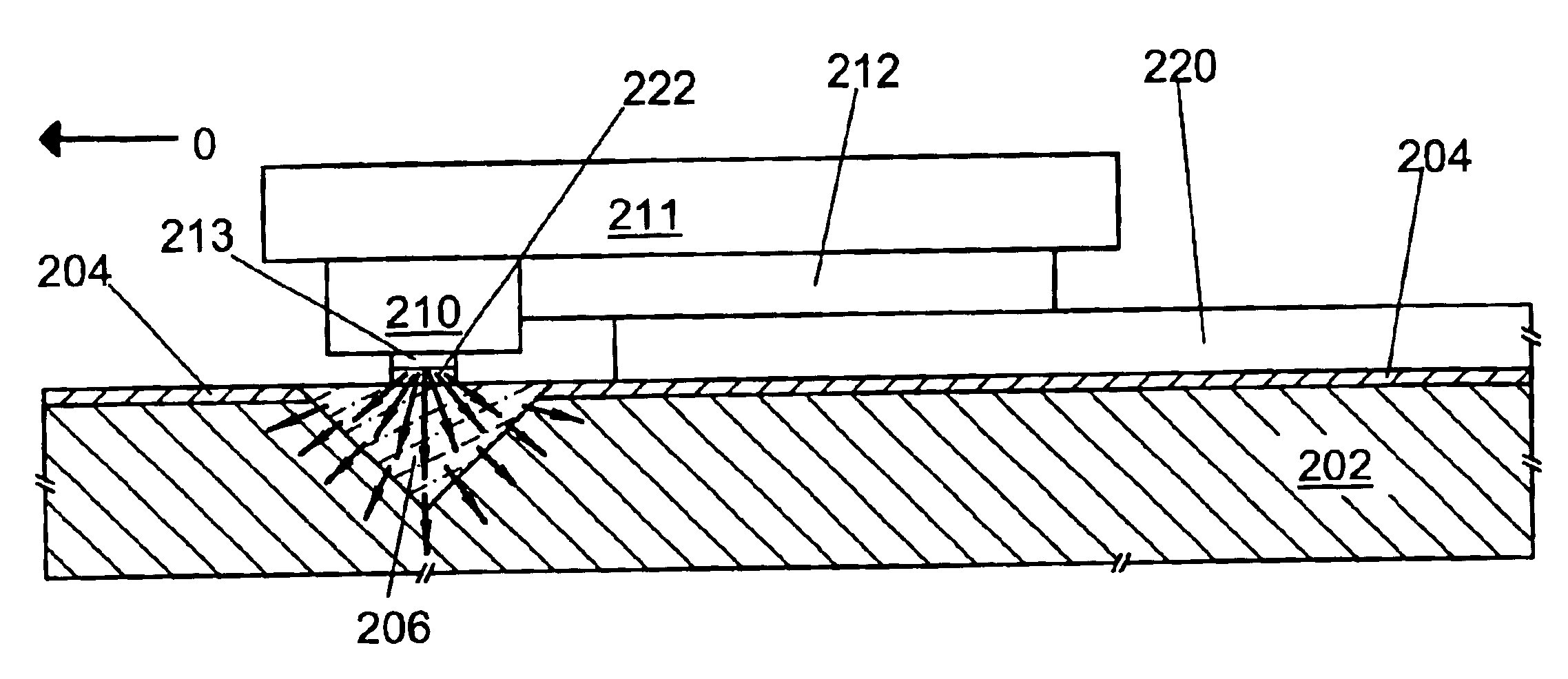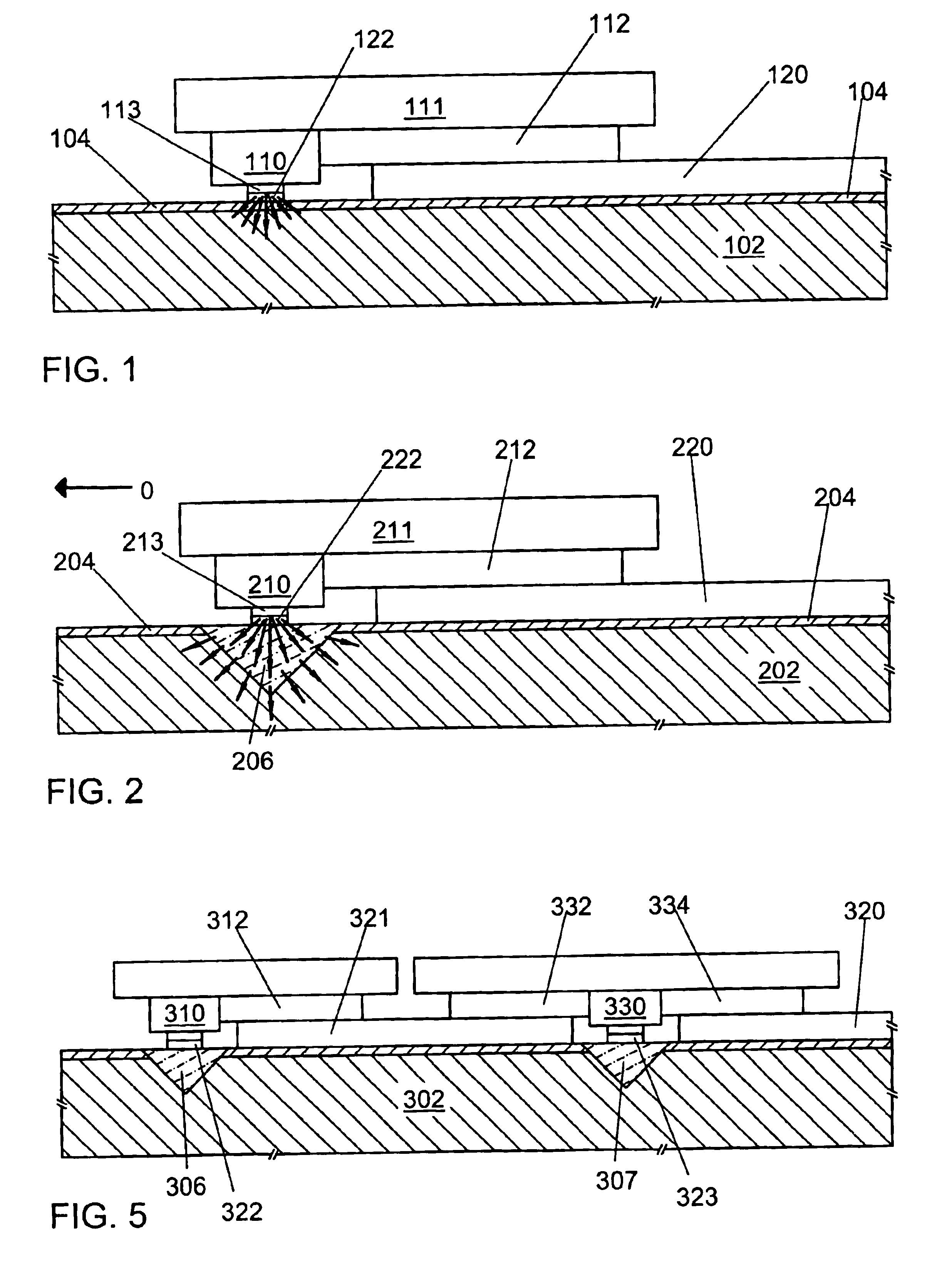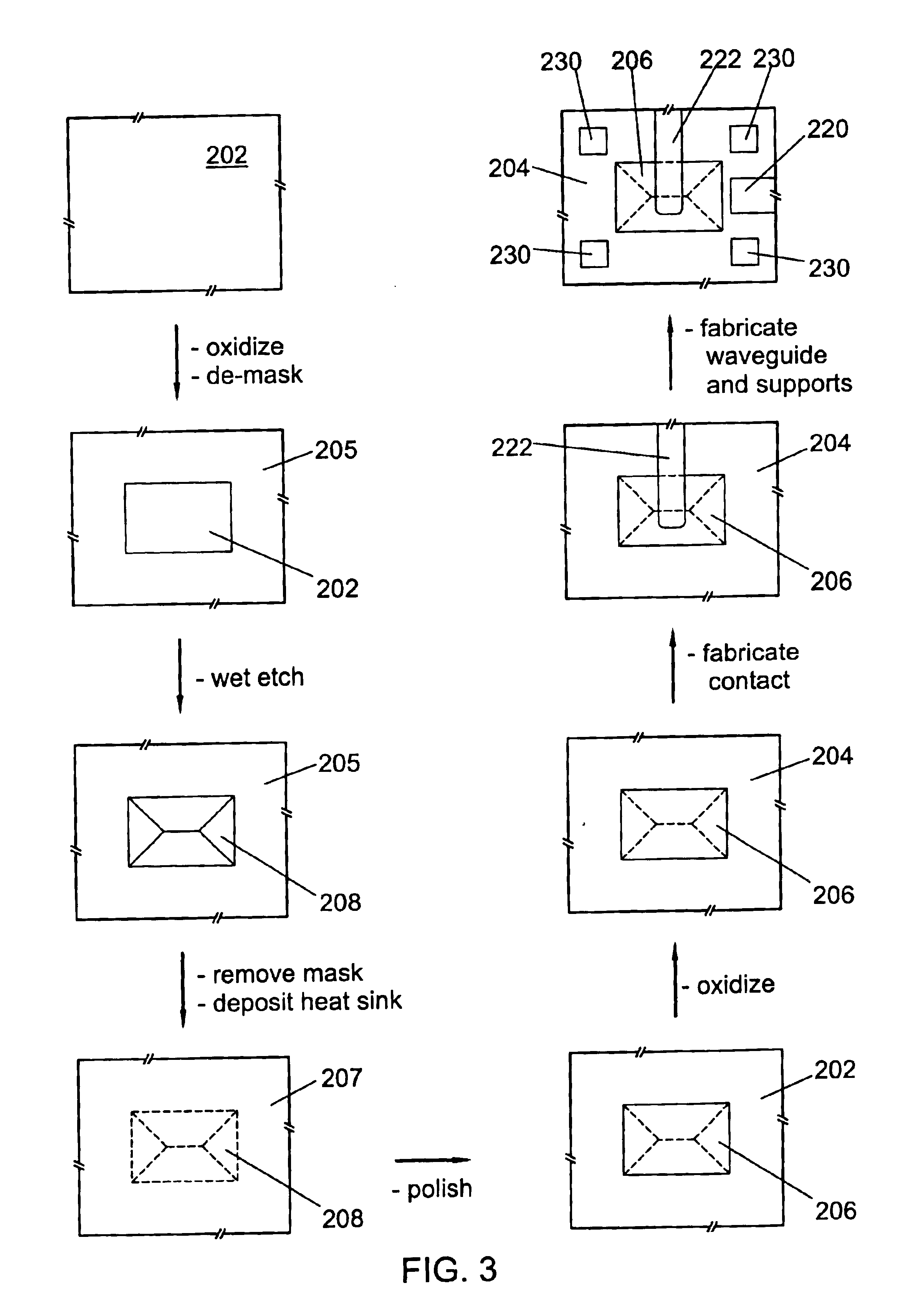Heat sink for a planar waveguide substrate
a planar waveguide and heat sink technology, applied in the direction of optical waveguide light guides, instruments, optics, etc., can solve the problems of insufficient heat dissipation, relatively large amount of heat generated in active regions of optical devices, and insufficient heat dissipation, etc., to achieve greater thermal conductivity
- Summary
- Abstract
- Description
- Claims
- Application Information
AI Technical Summary
Benefits of technology
Problems solved by technology
Method used
Image
Examples
Embodiment Construction
FIG. 2 shows an optical device mounted on a planar waveguide substrate with a heat sink according to the present invention. A silicon substrate 202 is provided with an optical buffer layer 204 and a heat sink 206. A planar waveguide 220 is formed on substrate 202 (with optical buffer layer 204 therebetween). An electrical contact 222 (typically Ti—Pt—Au several hundred nm thick; other suitable materials or material combinations may be equivalently employed) is formed on substrate 202 over portions of the buffer layer 204 and the heat sink 206. Heat sink 206 comprises material of greater thermal conductivity than substrate 202. An optical device 210 (on a device substrate 211 and including an external-transfer waveguide 212 in this example) is mounted on the planar waveguide substrate 202 (at least partially over heat sink 206) so as to establish electrical continuity with contact 222 (through device contact 213, typically Ti—Pt—Au; other materials or material combinations may be equ...
PUM
| Property | Measurement | Unit |
|---|---|---|
| thick | aaaaa | aaaaa |
| thermal conductivity | aaaaa | aaaaa |
| electrical continuity | aaaaa | aaaaa |
Abstract
Description
Claims
Application Information
 Login to View More
Login to View More - R&D
- Intellectual Property
- Life Sciences
- Materials
- Tech Scout
- Unparalleled Data Quality
- Higher Quality Content
- 60% Fewer Hallucinations
Browse by: Latest US Patents, China's latest patents, Technical Efficacy Thesaurus, Application Domain, Technology Topic, Popular Technical Reports.
© 2025 PatSnap. All rights reserved.Legal|Privacy policy|Modern Slavery Act Transparency Statement|Sitemap|About US| Contact US: help@patsnap.com



